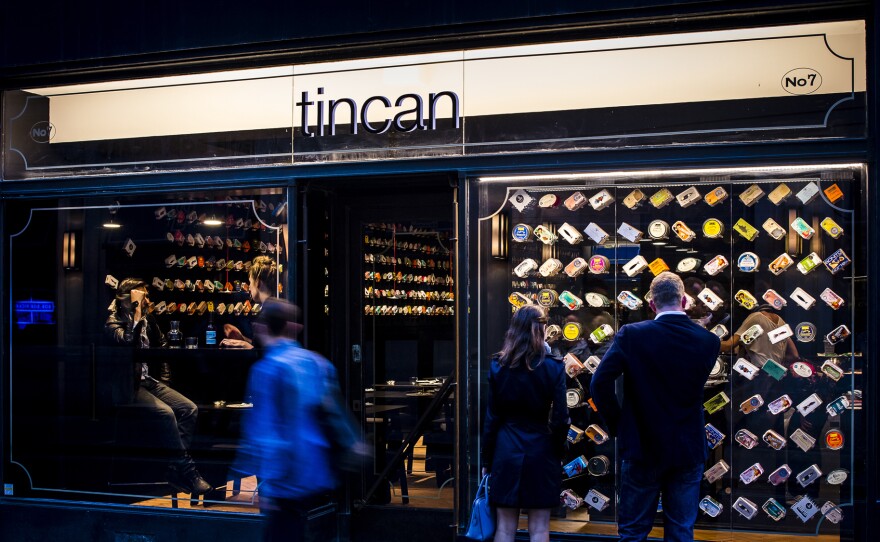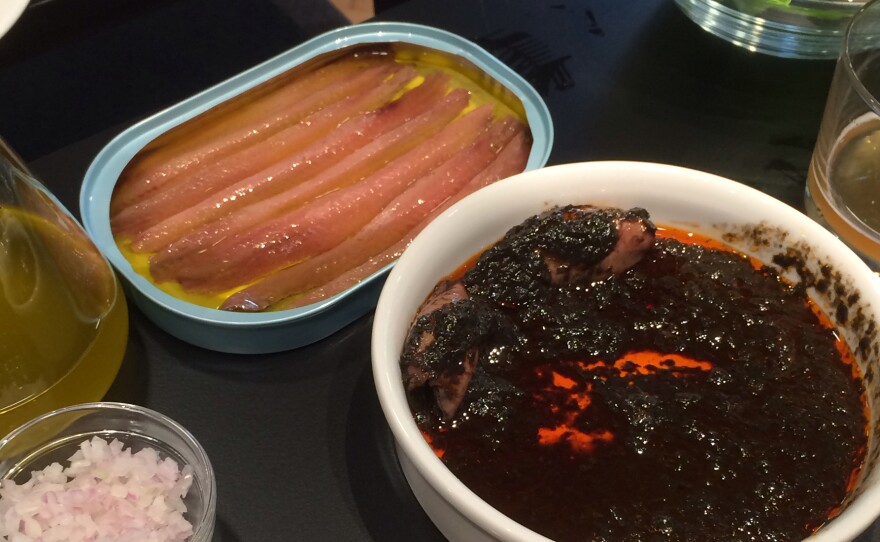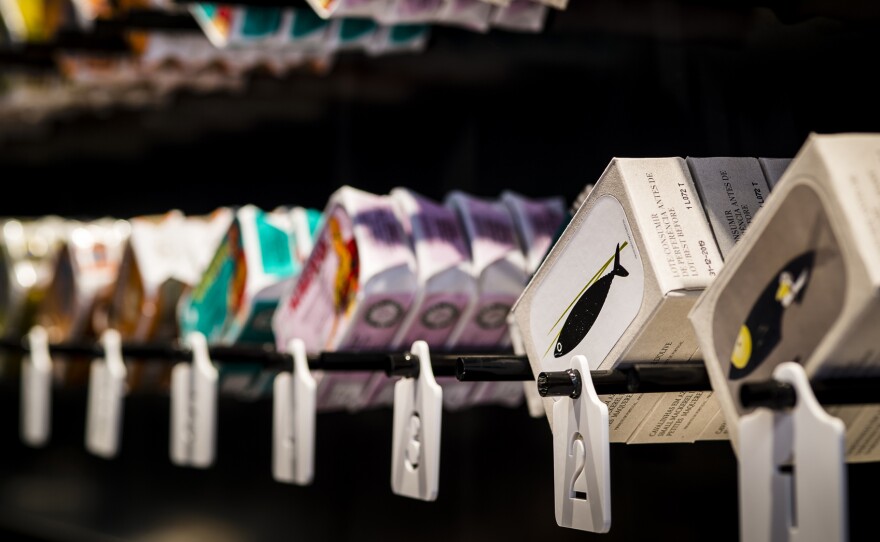


In the heart of London's Soho sits a gleaming new restaurant — Tincan. The premise is simple: No kitchen, very few staff, and the menu all comes out of a can. Specifically, canned fish.
To many people, canned food conjures images of stocking up for winter, emergency rations, or — for Brits – the deprivations of World War II.
"The big challenge we had was how to change the perception of tinned food in the U.K.," says Max Arrocet, one of the directors of AL_A, the architecture firm behind Tincan. He and his team, he says, wanted to "elevate the tin to an object of desire."
Indeed, there's a strong element of buying with your eyes at Tincan. Rows of gourmet-quality tins, beautifully packaged in collectible-worthy cans, are displayed at eye level.
"This combines our two passions: design and food," Arrocet tells me when I meet him for lunch at Tincan.
The products are carefully chosen not just for taste, but presentation. "If we have two products that are very close in terms of taste, we will definitely go for the tin that looks better," he says.
Most products on the menu come from Portugal and Spain, Arrocet's native country, where tinned delicacies have long been appreciated as culinary luxuries. On the day I visit, there are over 20 different varieties of tinned delicacies on display. The shelves in the shop behind the counter boast even more options.
We order the baby squid served in its own ink, some anchovies and cod liver. The food arrives quickly, unsurprising given that no preparation is needed.
Arrocet recommends the cod with a drop of oil and some sea salt. The squid are my favorite, and go well with the plate of bread that comes as a standard side dish at Tincan, along with a very small bowl of salad greens. The anchovies taste nothing like what I was expecting: Instead of sharp, salty, "pizza anchovies," these are fleshy, smooth-textured.
Sourcing is a big deal for Tincan, Arrocet says. "Family-run businesses make better products," he comments. His team, he says, scrutinizes the credentials of all of their suppliers. When they first opened Tincan, the owners faced criticism over one of their blue fin tuna products – so they stopped stocking it.
Arrocet thinks canned food is one of the greenest options around: There's very little energy used in the process from manufacturer to your plate, no refrigeration required in the transportation phase, and even in the restaurant itself, the products don't need to be cooled. Only the anchovies are kept at a low temperature. "But in reality, you don't really need to — we're doing it because that's what they suggest you do," Max says. "So if you think about it in terms of energy efficiency, this is really energy efficient."
Some popular canned fish species, like sardines, can also be a relatively more sustainable option, as well as a rich source of omega-3 fatty acids, which is why celebrity chefs like England's Jamie Oliver and Hugh Fearnley-Whittingstall have been advocating their use in recent years. In Paris, Alain Ducasse has said he plans to use "humbler" fish in his newly re-opened, three-Michelin-starred restaurant.
"I think there's been a revival in Spain and Portugal in the past few years," says Arrocet, holding up a cookbook dedicated to canned food. "[The Spanish] are getting well-known chefs to give them really simple recipes."
With prices anywhere between $10-30 a tin, a meal at Tincan doesn't come cheap. And while fish, bread and a few greens aren't unhealthy per se, critics have noted that they hardly constitute a balanced meal.
"We have a lot of people that just disagree with the whole point of not having a kitchen,"Arrocet acknowledges. But, he argues, "most really good restaurants actually use a lot of products from tins. There's no difference with what we do here. There's a sense of honesty: We're saying, 'the product is so good, the chef for this one is behind the tin.' "
Tincan is a pop-up. It's in Soho for six months, and if all goes well, Arrocet says he and his team will consider their options. He'd like to take the concept to other cities – he mentioned visiting the Venice Biennale – and would be open to discussing possible ventures with high-market food halls, or perhaps even a more permanent restaurant.
Copyright 2014 NPR. To see more, visit http://www.npr.org/.






